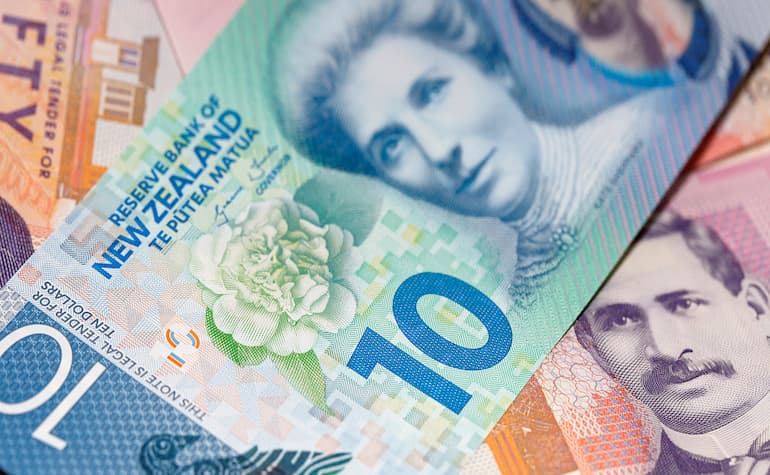Notícias de mercado & insights
Mantenha-se à frente dos mercados com insights de especialistas, notícias e análise técnica para orientar suas decisões de negociação.

Multi-Timeframe (MTF) analysis is not just about checking the trend on the daily before trading on the hourly; ideally, it involves examining and aligning context, structure, and timing so that every trade is placed with purpose.
When done correctly, MTF analysis can filter market noise, may help with timing of entry, and assist you in trading with the trending “tide,” not against it.
Why Multi-Timeframe Analysis Matters
Every setup exists within a larger market story, and that story may often define the probability of a successful trade outcome.
Single-timeframe trading leads to the trading equivalent of tunnel vision, where the series of candles in front of you dominate your thinking, even though the broader trend might be shifting.
The most common reason traders may struggle is a false confidence based on a belief they are applying MTF analysis, but in truth, it’s often an ad-hoc, glance, not a structured process.
When signals conflict, doubt creeps in, and traders hesitate, entering too late or exiting too early.
A systematic MTF process restores clarity, allowing you to execute with more conviction and consistency, potentially offering improved trading outcomes and providing some objective evidence as to how well your system is working.
Building Your Timeframe Hierarchy
Like many effective trading approaches, the foundation of a good MTF framework lies in simplicity. The more complex an approach, the less likely it is to be followed fully and the more likely it may impede a potential opportunity.
Three timeframes are usually enough to capture the full picture without cluttering up your chart’s technical picture with enough information to avoid potential contradiction in action.
Each timeframe tells a different part of the story — you want the whole book, not just a single chapter.

Scalpers might work on H1-M15-M5, while longer-term traders might prefer H4-H1-H15.
The key is consistency in approach to build a critical mass of trades that can provide evidence for evaluation.
When all three timeframes align, the probability of at least an initial move in your desired direction may increase.
An MTF breakout will attract traders whose preference for primary timeframe may be M15 AND hourly, AND 4-hourly, so increasing potential momentum in the move simply because more traders are looking at the same breakout than if it occurred on a single timeframe only.
Applying MTF Analysis
A robust system is built on clear, unambiguous statements within your trading plan.
Ideally, you should define what each timeframe contributes to your decision-making process:
- Trend confirmed
- Structure validated
- Entry trigger aligned
- Risk parameters clear
When you enter on a lower timeframe, you are gaining some conviction from the higher one. Use the lower timeframe for fine-tuning and risk control, but if the higher timeframe flips direction, your bias must flip too.
Your original trading idea can be questioned and a decision made accordingly as to whether it is a good decision to stay in the trade or, as a minimum action, trail a stop loss to lock in any gains made to date.
Putting MTF into Action
So, if the goal is to embed MTF logic into your trade decisions, some step-by-step guidance may be useful on how to make this happen
1. Define Your Timeframe Stack
Decide which three timeframes form your trading style-aligned approach.
The key here is that as a starting point, you must “plant your flag” in one set, stick to it and measure to see how well or otherwise it works.
Through doing this, you can refine based on evidence in the future.
One tip I have heard some traders suggest is that the middle timeframe should be at least two times your primary timeframe, and the slowest timeframe at least four times.
2. Build and Use a Checklist
Codify your MTF logic into a repeatable routine of questions to ask, particularly in the early stages of implementing this as you develop your new habit.
Your checklist might include:
- Is the higher-timeframe trend aligned?
- Is the structure supportive?
- Do I have a valid trigger?
- Is risk clearly defined?
This turns MTF from a concept into a practical set of steps that are clear and easy to action.
3. Consider Integrating MTF Into Open Trade Management
MTF isn’t just for entries; it can also be used as part of your exit decision-making.
If your higher timeframe begins showing early signs of reversal, that’s a prompt to exit altogether, scale out through a partial close or tighten stops.
By managing trades through the same multi-timeframe approach that you used to enter, you maintain logical consistency across the entire lifecycle of the trade.
Final Action
Start small. Choose one instrument, one timeframe set, and one strategy to apply it to.
Observe the clarity it adds to your decisions and outcomes. Once you see a positive impact, you have evidence that it may be worth rolling out across other trading strategies you use in your portfolio.
Final Thought
Multi-Timeframe Analysis is not a trading strategy on its own. It is a worthwhile consideration in ALL strategies.
It offers a wider lens through which you see the market’s true structure and potential strength of conviction.
Through aligning context, structure, and execution, you move from chasing an individual group of candles to trading with a more robust support for a decision.


The US Dollar Index (DXY) has closed its fourth consecutive day in the red, reaching levels last seen in early May 2023. Despite the recent decline, the DXY is coming into support around the 100 level, which has proven to be a resilient bounce point multiple times. However, each bounce appears to be getting smaller, which might indicate growing downward pressure.
This support level adds an interesting dynamic to the market as traders watch for potential price reaction. Todays US CPI print may hold the key to determining the DXY's future trajectory. If the CPI data is reported higher than expected, it could potentially fuel speculation of tighter monetary policy by the Federal Reserve.
In such a scenario, we might see the DXY experiencing a short-term rebound, as higher interest rates tend to attract investors seeking stronger returns. On the other hand, if the CPI data comes in lower than expected, market participants might interpret it as a sign that the US Federal Reserve will maintain its current pause in interest rate hikes during their upcoming FOMC meetings. If that occurs, it could potentially exert downward pressure on the US Dollar.
A more accommodative monetary policy stance may reduce the attractiveness of the USD to investors seeking higher yields, leading to a potential decline in its value against other currencies and potentially sending the DXY below 100 for the first time since early 2022. US CPI will be released at 08:30 EDT, YoY is expected to come in at 3.1%, with MoM expected at 0.3%


The current market consensus is that the Reserve Bank of New Zealand (RBNZ) would likely keep interest rates at 5.50% at the upcoming meeting on 12th July. This is supported by the RBNZ’s monetary statement indicating that “ monetary policy is having a sufficiently moderating effect on demand and inflation, and that we are yet to see the full effects of past tightening on the economy. A pause would also allow more time to assess the impact of the significant tightening, and the timing of any further increase that might be needed.” However, while the Consumer Price Index (CPI) has turned down from its peak of 7.3%, the most recent data was released at 6.7%, this is still significantly higher than the RBNZ’s target level of 1-3%.
Therefore, another rate hike from the RBNZ cannot be ruled out. In May, the RBNZ released its decision to hike rates to 5.50% but also indicated that the official cash rate has reached its peak at 5.50% but would need to remain at the restrictive level until at least the middle of 2024. This led to the NZDUSD falling steadily from 0.6250 to reach the round number support level of 0.60.
As the NZDUSD climbs toward the 0.6250 price area, formed by the previous swing high and the downward trendline, look for a potential reversal if the RBNZ holds interest rates at 5.50% as forecasted. A reversal to the downside could reach the price level of 0.61, supported by the upward trendline, and beyond that, the 0.60 round number key support level.


Todays NFP figure out of the USA is shaping up to be a pivotal moment in market expectations as to whether we’ve seen peak rates from The Federal Reserve, or if there is more to come and the ramifications that will have for the FX market. NFP figures are always interesting, traditionally the biggest market moving figure of the month on the US calendar, and against the backdrop of the Feds “data dependent” messaging regarding future rate moves this figure will be a big piece of how the market prices in the result of the September Fed meeting. Currently markets are butting heads with the Fed, only pricing in a higher chance of no more hikes from the Fed, despite Fed guidance and dot plots indicating they are looking at least one more hike this cycle.
Current September Fed Fund Future odds are showing only a 17.5% of a hike in the September meeting. Source:CME Fedwatch tool Market expectations are for a slowing in payroll growth in July the consensus being 200k nonfarm payrolls to be added to the US economy in July, slightly cooling from the 209k added in June, with the unemployment rate expected to remain unchanged at 3.6%. A big beat or miss on these expectations, a rapid repricing of hike/hold odds would be likely to see volatility and opportunities in FX markets.
Chart to watch: US Dollar Index (DXY) DXY has rallied strongly since mid-July as the UST 10 Year yields pushed higher and getting an extra boost from some risk-off this week in equity markets which pushed DXY through the S/R level at 102. DXY found resistance at its upper trend line at around the 102.84 level, seeing some of the recent gains being pared. Also an important factor is the close relationship between US10 yields and DXY, the yields now above 4% where they have struggled to go any higher in the recent past, this will also see a headwind against DXY pushing higher from this level.
The levels to watch over todays NFP will be 102.84 to the upside on a big beat, 102 as support to the downside if we get a big miss. Both of those levels will be key in the next trend direction of DXY. Calendar:


The Nasdaq Composite Index has kicked off 2023 with a historic performance, achieving its most impressive start since 1975. Despite concerns about a potential recession, the index has displayed remarkable resilience, surging over 37% year-to-date as of the end of July. The upward trend has been consistent, with green months recorded in 6 out of the 7 months of the year so far.
With only 13.50% more to run before it gets back to all time highs set in November 2021, it will be interesting to watch how this plays out over the second half of the year. From a technical standpoint, traders are closely monitoring the current price action within this crucial resistance zone. The market's reaction here will determine its short-term direction.
Will the resistance zone hold strong and push the price downward, or will the momentum be strong enough to break through and continue its journey toward all-time highs? Zooming out to the weekly timeframe, the Relative Strength Index (RSI) has been floating around overbought territory since mid-June. This confluence with the resistance zone indicates a possible cooling off period in the coming weeks.
This scenario wouldn't be overly surprising, as markets often experience a breather after significant surges.


After a fortnight of trending north, Gold has fallen over the past 5 days. It is currently trading at around $1960, showing a slight decline of approximately 1.35% from its recent high of $1987.53. Price is currently trying to break out of the downward channel that it has been in since late last week, so something to keep an eye on going into the key economic data due out this week.
All eyes are now on the upcoming FOMC meeting, where the market is currently pointing towards a high probability (over 98%) of a 25bps rate hike on Wednesday. Considering the historical inverse relationship between gold and the USD, let's explore potential reactions by Gold to the FOMC meeting: Rate Hike Scenario (USD Strengthens): If the FOMC goes ahead with the 25bps rate hike, it could lead to a strengthening of the USD. Higher interest rates tend to attract more investments into the US currency, potentially dampening demand for gold.
Consequently, gold prices might face downward pressure in this scenario. Rate Pause Scenario (USD Weakens): Conversely, if the Fed decides to maintain interest rates at 5.25% or hints at a more dovish approach, the USD could weaken. A weaker USD often prompts investors to seek refuge in gold as a hedge against currency depreciation and inflation.
As a result, gold prices could see an uptick due to increased demand. Source: CME Fedwatch tool With the markets almost entirely pricing in a 25bps hike, unless we get a surprise in the figure, volatility may stay subdued until Fed Chair Jerome Powell begins his press conference shortly after the announcement. Investors and traders will be eagerly analysing his language to see if there are any hints on future movements by the Fed.


The GBJPY has continued to climb strongly to the upside, since the end of March 2023 and currently trades just below the 183.00 price level. This move higher is driven by a combination of the weakness of the Japanese Yen and renewed strength in the British Pound. The Bank of Japan (BoJ) has begun to sound warning bells regarding potentially excessive moves in the Yen, and markets are speculating about the possibility of intervention from the BoJ.
The previous intervention from the BoJ came when the USDJPY reached the 145 price level. The USDJPY currently trades along the 143.60 price level. This could indicate that further upside could be anticipated on the GBPJPY before a strong correction to the downside.
If the GBPJPY breaks above 183 the price could continue to climb towards the next key resistance level of 188.70, with the Ichimoku cloud providing strong support for the uptrend. As the Relative Strength Index (RSI) is well into the overbought region, watch for a possible reversal if the BoJ intervenes, especially along the 188.70 resistance level or at the major swing high of 195.60 (last reached in June 2015)

